Discover Five Animals of the Patagonia Region
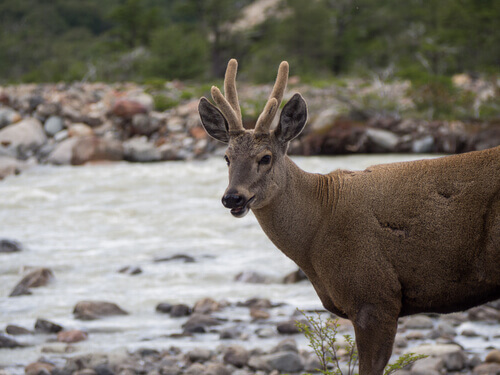
Patagonia is one of the coldest and windiest areas on the planet. However, this hasn’t prevented certain species from adapting and surviving. In this article, we’ll tell you about five animals that inhabit the Patagonia region in the south of Argentina and Chile, very close to Antarctica.
How many animals are there in the Patagonia region?
Contrary to common beliefs, many animals live in the Argentinean and Chilean Patagonia. Many of them are birds, although there are also land and marine mammals. Among the local fauna we can highlight the following:
1. South Andean deer
The South Andean deer, which appears in the main photo of this article, belongs to the deer family and lives in the area of the Andes. There are only a few hundred left, and that’s why it’s been declared in danger of extinction.
The south Andean dear can measure up to 5.5 feet and has very dense and thick brown or beige fur. One of the differences between the sexes is that the male has forked antlers that are up to 12 inches long. Females only give birth to one baby in each pregnancy.
These deer live in small groups within the Andean Patagonian forest, very close to the Strait of Magellan. Being herbivores, they feed on tree shoots, bushes, grasses and lichens found among the rocks.
2. Southern right whale
This is another of the most representative Patagonian animals and also one of the tourist attractions of the Patagonia region. The Southern Right Whale arrives in the area – specifically in the Valdés Peninsula – during the spring, to mate and take care of its calves.
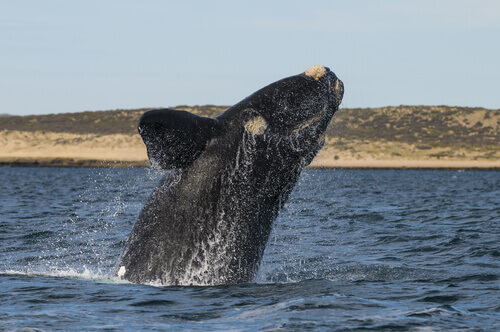
This enormous cetacean can measure up to 49 feet and weigh 40 tons. We can differentiate it from others due to the ‘calluses’ it has all over its body. They act as a kind of fingerprint that doesn’t change in any stage of its life.
This giant animal’s food consists of microorganisms called plankton, which it can devour in one bite. The southern right whale is known for its beautiful tail and for the long ‘jets’ of water it shoots from the top of its head as it surfaces.
3. Cougar
The cougar also inhabits this continent, as it adapts without difficulty to diverse habitats. After the jaguar, it’s the second-largest cat in the Americas and the fourth largest worldwide (the first two are the tiger and the lion).
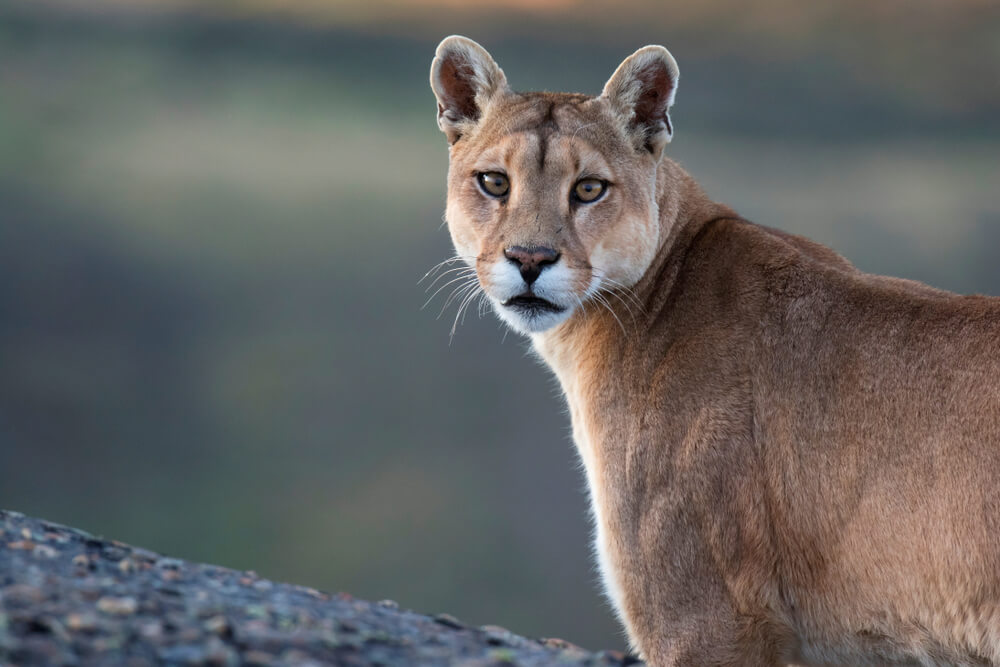
Unlike the others in its family, the cougar, or puma, can’t roar, but, rather, purrs like a cat. It’s a solitary predator and a hunter that relies on the technique of ambush to get its prey. Deer, guanacos, rodents, and insects are its main food sources.
It chooses areas with dense vegetation to live in, lurks for hours, and camouflages itself in the grass thanks to its light brown or golden fur.
With a slender and agile body, the cougar has very powerful front legs with retractable claws and large fangs to kill its prey instantly. Females are fierce when it comes to defending their young. They hide them in burrows or caves and live with them until they’re three months old.
4. Magellanic Penguin
Although they can’t fly, penguins are also birds. However, they’ve adapted to their habitat and become expert swimmers. In fact, they can even reach 28 mph underwater. In the case of the Magellanic penguins, they live on the coasts and Patagonian islands and are characterized by their black and white body which allows them to mimic the depths of the ocean.
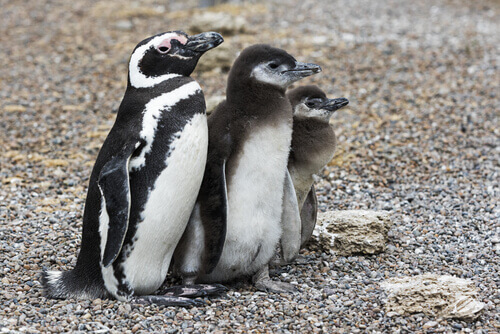
This bird feeds on fish such as silversides and sardines, as well as crustaceans such as squid and krill. They nest in colonies near the coast and are monogamous. Couples prepare their nest and, after mating, the female lays two eggs, which she incubates with the help of the male for 40 days.
5. Rhea
Known locally as the choique or ñandú, this is another of the most representative Patagonian animals. It’s also a flightless bird, endemic to this arid and cold region of South America. It lives in small groups of one male and several females; only the father is in charge of covering all the eggs that it’s had with different mothers. As soon as they hatch, the chicks follow him everywhere.
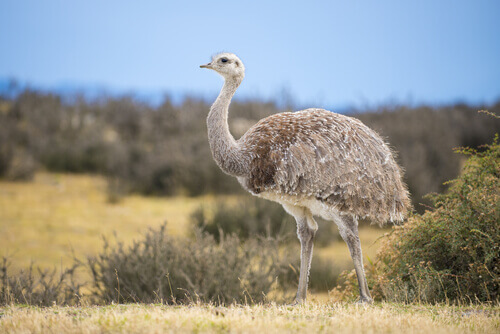
It has gray and white feathers, measures up to some three feet and weighs about 62 pounds. Its head is small, but both its neck and legs are long. The latter allow it to reach very high speeds… 37 mph!